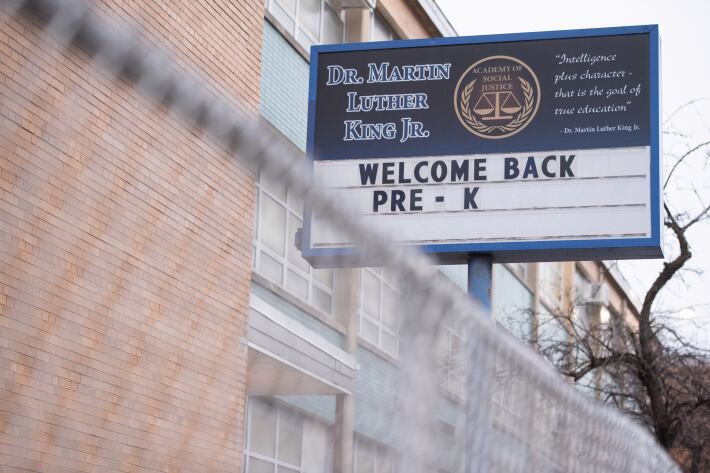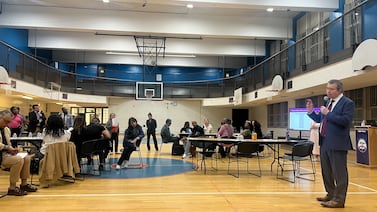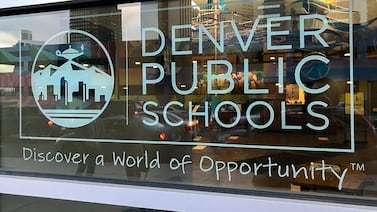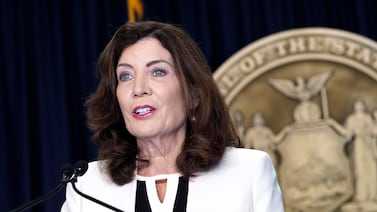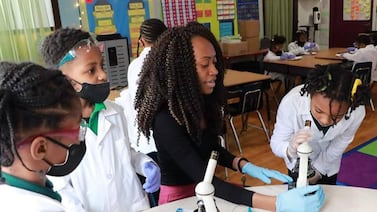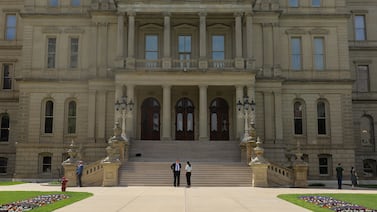Principal Jasmine Thurmond enthusiastically welcomed students back to King Academy of Social Justice on Monday morning. By afternoon, she and her staff members were working the phones in an effort to reach families who selected in-person learning, but didn’t appear on the first day.
On Monday, the school in Englewood was missing about 40% of the students who said they were coming back.
“We called just to say, ‘Hey, we missed you; we know you opted in, what else do you need?’” Thurmond said.
As Chicago reopens more classrooms amid a trying year, principals are confronting the difficult task of finding students, both those who signed up for in-person learning and failed to show and those students who haven’t responded to district outreach at all. The district has said a “tremendous” centralized outreach campaign is ongoing. In the days leading up to Chicago’s biggest reopening push yet, 15,000 elementary and middle students still had not responded with their plans.
Thurmond’s team encountered a litany of reasons why some families who signed up for in-person learning didn’t appear the first day: Some families had gotten out of the routine of in-person school and overslept — in response, Thurmond arranged wake up calls. Some work situations had changed, complicating logistics of in-person school. Some ran into trouble with the electronic health screener that ostensibly must be completed before anyone enters a school. As she discovered when prekindergarten classrooms reopened in January, some had first-day jitters about sending their child back to school in a pandemic.
Of the school’s 238 students, 52% chose to continue remote learning, 31% of students opted to return to classrooms, and 17% didn’t respond at all — the latter a gray area in the district’s data that school leaders have spent the past few weeks trying to understand.
In some cases, essential workers sent their children out of the city of state to be in the care of a loved one. Internet access issues made it difficult for some families to communicate with the school. And other families were shattered by COVID-19 deaths.
The pandemic’s great disruption of schooling has upended traditional attendance patterns. Principals say they are working phones, sending flurries of emails and social media messages, and even trekking to homes to try to pin down students and get them back in the fold.
One unexpected issue at King Academy: Grandparent caretakers who could not get the online health screener to work. Thurmond said she dispatched willing staffers to help coach them through it (though, separately, parents at multiple schools reported having issues with the district’s digital health screeners Monday).
Chicago Public Schools has not yet released attendance data for the week, but it’s likely that in-person figures will be lower than predicted, as families change their minds, run into complications, or, in some cases, have runny noses or other issues that cause them to fail health screeners. In all, about 1 in 3 Chicago elementary students selected in-person learning, though numbers have declined in recent weeks, officials acknowledged.
What happened during the district’s pilot reopening in January for prekindergarten and special education students could prove instructive: About 60% of students who said they planned to report for in-person learning actually did. They didn’t all just resurface in remote classrooms: 12% of students did not show up anywhere, a worrisome trend for educators.
The numbers were worse for the district’s Black students: About 20% of Black prekindergarten and special education students did not report to school the first week of reopening in January.
Some principals say they are optimistic that in-person attendance will be higher this time and that, if COVID-19 rates stay manageable, more students will indeed return for the fourth quarter as district leaders have predicted. COVID-19 positivity rates are falling in Chicago, labor tensions have eased somewhat following an agreement between the district and the teachers union over elementary school reopening (there’s no agreement yet on high school), and more residents have been vaccinated. Supply issues and appointment logistics continue to plague Chicago, much like in many other cities.
Wendy Oleksy, the principal of Columbus Elementary in Ukrainian Village, said her in-person data so far has been stronger this week, as 60% of kindergarten through fifth graders who said they planned to return did, compared to January’s pilot reopening when 1 in 3 of her prekindergartners did. She’s hopeful that when middle school students return next week, younger siblings who did not attend class this week will tag along.
“Top of mind for me is ensuring that everyone in the building feels safe and has a reduction in their anxiety,” said Oleksy, who has communicated “very heavily” with parents through calls, emails, town halls and social media posts. “Any amount of anxiety will inhibit teaching and learning. How can I ease that? That’s on the top of my mind.”
Principals are trying aggressive outreach tactics to narrow those numbers. One principal at a neighborhood elementary school on the West Side, who requested anonymity, said that families who didn’t respond to the district’s reopening survey was “a red flag” for the school. The roughly 10% of students whose families did not fill out the survey are largely also children who have not been actively engaging in remote instruction.
“That’s one of the indicators that show families who are completely disengaged from learning,” the principal said. “They might have picked up a device last spring, but their housing and economic situations might have changed.”
The school called these families repeatedly to follow up on the survey. A social worker, security guards, the principal and assistant principal deployed to these students’ homes as well, but that outreach in most cases did not succeed in re-engaging them.
After reports that thousands of students had fallen out of contact with the district in the spring, Chicago Public Schools pledged to redouble efforts. In September, officials detailed new protocols to find them using phone calls, mass flyering campaigns led by Safe Passage workers, and security guards trained for home visits. On the first day of all-remote school in September, about 49,000 students had not logged in. Weeks later, that number had winnowed down to fewer than 3,000.
But as remote learning persisted throughout fall, and efforts to reopen schools were repeatedly scuttled due to rising COVID-19 rates and threats of union action, officials warned that attendance was sagging. By November, the district was reporting an attendance drop of 3% compared to the same period prior, with Black students and those with special needs seeing a 5 percentage-point drop. Attendance for those in temporary living situations was down more than 7 percentage points.
Officials also reported a schism in grades, with more students receiving As during sustained remote learning, but also more Fs. The disparities in grading data, and the sagging attendance, became key arguments in the district’s push to reopen campuses at the start of 2021.
Mila Koumpilova contributed reporting.


